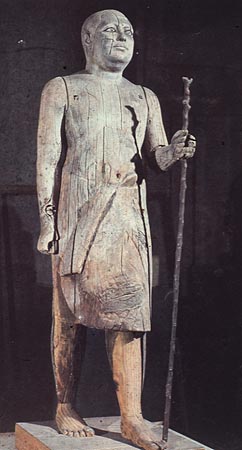
Sculptors usually start with a block of material but they often get their ideas form the existing form. They often choose the best material to create the piece they want to form. For example carved wood sculptures have a vertical linear thrust since it is being subtracted from a cylindrical tree trunk. An ancient sculpture called Sheikh el Beled from the tomb in Saqqara, Egypt, is very obvious that it is from a tree trunk, which was carved to slightly show the torso, leg, and head. The piece is from 2450-2350 BC but looks so detailed that I wouldn’t have known it was from thousands of years ago. Most earlier sculpture are monolithic which means that they retain the closed form of the original single stone or wood.
When I think of art I never think of subtraction as an art term or topic, I think of math instead. Subtraction process is when an artist takes a material larger than desired and carve down to an object or art piece. Another word for this could be sculptor or sculpting. I personally have never really don’t any sculpting work where I start with a block of wood and then carve it down to an object.
Most of the time you use wood or stone for the materials. You use wood because of the texture and the after look of the material. It has a organic feel, texture, and grain pattern to it. The best woods to use for subtraction is white pine, redwood, spruce, and cedar. They are the softest woods which is pleasing to touch and handle. Tools to sculpt the piece is power tools such as chainsaws or a electric drill, you can also use hand tools. This isn’t directly considered hand-shaping but the artist does use his hand throw the tools to shape the art piece.
Zelanski, Paul, and Mary Pat Fisher. Shaping space: the dynamics of three-dimensional design. Australia: Thomson Wadsworth, 2007. Print.